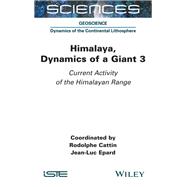The Himalaya is well known as the largest and highest mountain belt on Earth. Advances in geoscience over the past few decades have revealed a complex picture of the dynamics of this giant, opening up questions about the initial stages of Himalayan building, lateral variations in its structures, variations in tectonic forcing, tectonic-climate coupling and assessments of the natural hazards affecting this area.
In this three-volume book, we present the current knowledge on the building and present-day behavior of the Himalayan range. The objective is not to be exhaustive, but to provide some key elements used by researchers to unravel the many processes acting in the Himalayan dynamics.
Mountain environments are at the forefront of climate change with glacier retreat, landslides, flash floods and water availability. Understanding the delicate balance that controls the dynamics of the Himalayan giant is now, more than ever, a major challenge for the scientific community.









